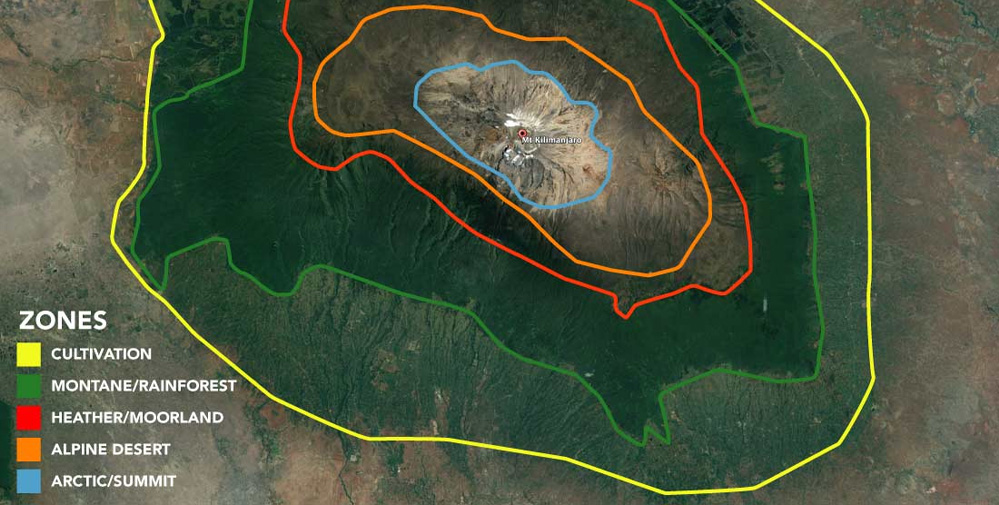How many ecological zones should I pass through when climbing Mt Kilimanjaro?
There is main five ecological zones that you will pass through when climbing Mount Kilimanjaro. This ecological zone will be changing grammatically as you go high.
The cultivation zone from 1500m and below. The main crops cultivated here are maize, banana trees and Arabic coffee.
The forest zone from 1,600m to 2,000m, is cool, damp/wet, with daily temperatures in the low to middle 20 degrees.
The heather/moorland zone from 2,000m to 3,500m, has greater daily fluctuations, and it often warmer during the day if in sun (up to 25 degrees), and colder during the night (down to freezing point).
The alpine desert zone from 3,500m to 4,500m, has even more daily radiational heating and cooling, with daily highs up to 20degree and night time temps always below freezing.
The summit zone zone (over 4,500m) is always below freezing point, but radiational heating under 2m from the sun creates a ‘microclimate’ which can make it feel quite hot during the day, in the sun. Night-time temperatures range from minus 10degrees of Celsius to minus 30 degrees depending on the season.

